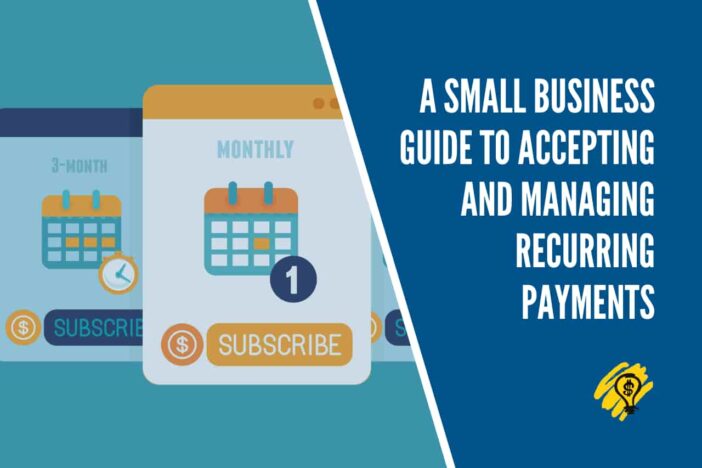Cash flow is the lifeblood of every business, and they rely on customers and clients to pay on time to keep the operations going. It becomes problematic when payment delays happen due to various reasons.
But you can curb that issue when you start accepting recurring payments instead by using tools that make it possible to do so. This article will help you understand recurring payments and how they work.
What Are Recurring Payments?
Recurring payments are a payment method wherein customers can arrange for payment pre-authorization or allow businesses to automatically deduct payments from their respective cards or accounts. The deduction occurs at regular intervals in exchange for goods and services. The business receives permission from the customer who’s chosen a specific schedule and frequency of payments. Such arrangement occurs in businesses that offer memberships and subscriptions.
Customers who allow pre-authorized debits (PAD), for instance, enjoy the benefit of not having to make time and leave home to pay for continued service or access. They understand that they’ve agreed to the terms of the business, allowing them to electronically withdraw a specific amount from the customer’s account and deposit it into the business account. If you’re a business that wants to make use of pre-authorized debits for the convenience of your customers, you can look online for a legitimate website or two that thoroughly discuss this matter.
How Recurring Payments Work
Your business needs a payment service provider or a merchant account to allow you to receive payments online. At the same time, your customers can better assess how they can choose a payment method that’s right for their situation.
1. Recurring Invoices
If a business owner doesn’t want to charge credit cards belonging to customers, they can choose to set up recurring invoices instead. The business schedules when the invoice is sent to the customer or client, who’ll then manually pay their dues.
There are payment processors and POS (point of sale) systems that can automate the process for you. Keep in mind that it doesn’t save time for the customers. And, you also can’t charge the customer’s card if you don’t have any authorization. It poses a problem when the customer can’t pay on time.
2. Automatic Payments
Payments are charged in real-time from the customer’s card. Your business must first obtain permission from the customer and give payment information. The customer can also choose to provide bank details or use a third-party payment processor.
The automatic payments process happens once a deduction from the account proceeds without any action from the customer. They usually receive a receipt of payment from the business as proof of payment.
How To Manage Recurring Payments
Offer Good Payment Methods To Your Customers
Customers like it when you’re offering choices because they prefer various payment methods. Some payment methods will be popular in multiple locations, which is why it helps when they can purchase your product or service and pay for them with whatever option.
In the United States, people own credit cards, and these are still the preferred payment method for online purchases compared to other countries that use digital wallets and bank debits. Other countries, such as Australia, are using all payment methods.
Store And Secure Customer Information
Remember that recurring payments aren’t just about automatically gathering money from customer accounts. Before that, your customers provide sensitive information, and your business is amassing them by the thousands.
Such pieces of information must be stored and updated securely. When it comes to keeping data and information, businesses can never be too careful. Choose third-party services or in-house electronic information to preserve electronic data.
When your database stores a massive amount of customer data, it only makes sense to use encryption for transactions. It pays to know the proper steps to secure customer data. You also need to ensure that you’re using legitimate payment methods because there’s a risk of chargebacks with unsecured ones. Investing in quality encryption helps ensure that your payment system is safe from data breaches, identity theft, and hackers.
Allow Customers To Choose Payment Schedule
If you can, allow your customers to choose flexible payment terms. You need to understand that customers are also following schedules and terms from their funding sources. To ensure they have enough money to continue with the recurring payments, let them choose when they get billed and how frequently they’re billed. Let them decide if they want monthly or annual billing. They like it if they’re allowed specific flexible terms to enable them to stay longer.
Communicate And Listen To Customers
You must maintain communication with customers who choose to allow recurring payments. Please keep them in the loop and ask for feedback via social media, email, or other communication methods. Go over comments, and address each question and complaint to the best of your abilities. Those with transaction problems should be prioritized. By constantly keeping up with your customers, you’ll be able to focus and fix issues preventing them from having a positive customer experience. You’re less likely to incur chargebacks this way.
In Conclusion
Recurring payments offer your business the security of getting payments on time, as well as provide automatic convenience for your customers. But, it’s also essential to provide them with options, from payment methods to billing frequency, and listen to their opinions to ensure that you provide good company for your patrons.



